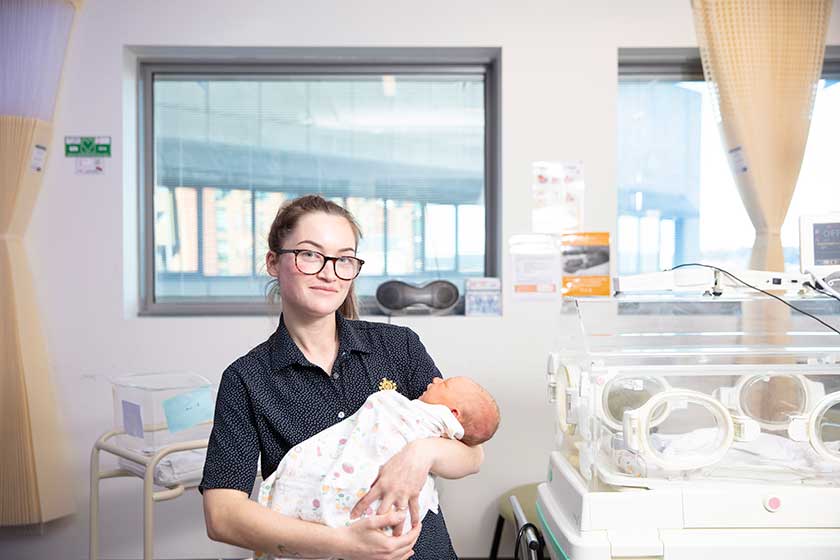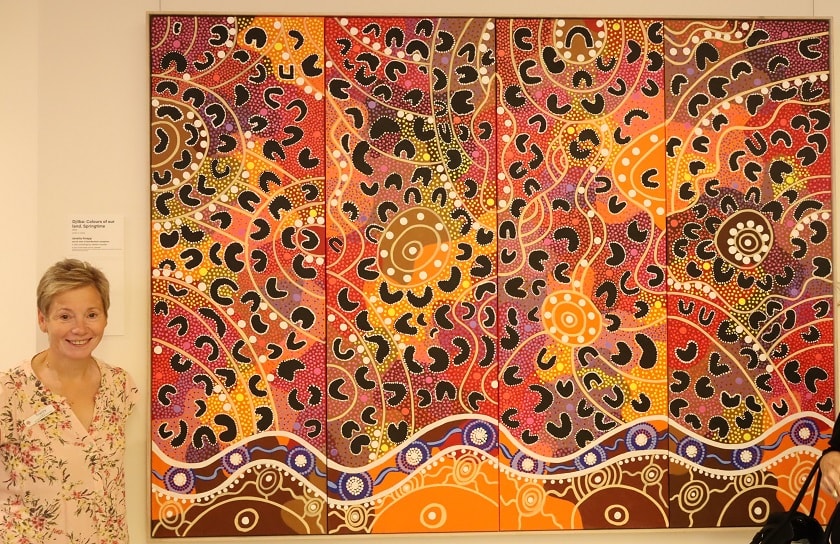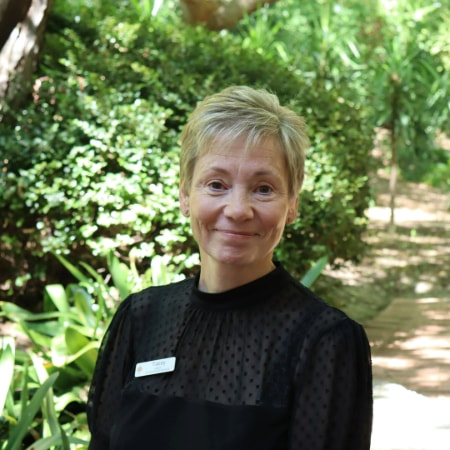Firstly, as a bit of background, Phillip’s experience includes leading key hospital and health care services in New Zealand’s north island (including Counties Manukau which had births at Middlemore Hospital and three smaller community birthing centres) where about 7,400 babies were born annually. The service also had 42 neonatal unit cots providing care for level three and four neonates. Read more stats below.
All this means he is well-equipped to compare the differences between midwifery in New Zealand and Australia. Phillip is very mindful of the workforce pressures on midwives in both NZ and Australia and is committed to building and strengthening the midwifery workforce.
He is now in charge of our organisation’s Geraldton hospital where he has been responsible for reinstating maternity services to the regional community after a brief hiatus due to midwifery workforce shortages. The unit now has attracted more midwives and has a robust and stable roster that supports flexibility individual needs and circumstances and work life balance.
Seven key differences in working as a midwife in Australia versus New Zealand:
-
Midwife-led care
In New Zealand, midwives lead the majority of care for pregnant and birthing women, as well as postnatal care either as employed midwives or as independent practitioners called lead maternity carers.
Obstetricians or doctors are usually only called upon when issues emerge or a women is at high-risk of complications. The midwifery workforce transfer clinical responsibility under agreed protocols with the obstetricians.
In Australia, this is very similar in the public hospital system, which includes our hospital in Midland.
However in our private hospital system, midwives work really closely with obstetricians and the multidisciplinary team (including nurses and physiotherapists) to support women and families in antenatal care, during birth, and postnatally. -
Staffing levels
In NZ, the National Maternity Monitoring Group and Midwifery Strategic Advisory Group of Health Workforce New Zealand endorsed the MERAS staffing standards for birthing and postnatal units. Australia also meets these staffing level standards.
In NZ, according to the MERAS rostering and availability survey only a small proportion worked fulltime (13%) with a third working 30 hours and a third working less. We have flexibility similarly in our employment model in Australia as we realise family responsibilities and work life balance are important. -
Community births
Many births in New Zealand would be considered community births, including home births, where women do not go to hospital.
In Australia, home births are relatively uncommon. Most women, whether they go through the private or public system, go to hospital to receive antenatal care, for birth and for postnatal care.
This enables midwives to support women with the highest level of care and support possible and enables escalation when issues do occur to happen rapidly.
It also means midwives are never alone in providing care to women (more on this below). -
Support from an experienced team
In New Zealand, as in Australia, maternity group practices are staffed by a team of midwives who work together to support the mother and baby throughout their pregnancy. They have access to the medical and allied health team as required.
In Australia, women are supported by an extensive team of health care workers. This includes midwives, nurses, obstetricians, doctors and allied health professionals. Paediatricians also care for newborns. This means that midwives are never alone in providing care, they always have someone who they can rely on to provide a second opinion or to raise concerns to, including those with more experience and knowledge or expertise. -
Working with obstetricians
As I noted above, midwives in New Zealand have a great understanding of working together within and outside their clinical group. Midwives in Australia can work either within the inpatient setting in a collegial environment with obstetricians and other doctors or in community in a group practice.
In Australia I have seen been impressed by the constructive and congenial relationships that exist between our obstetricians and midwives which leads to fantastic care for our women and families.
While care in our hospitals is obstetrician-led, midwives can still get to birth babies and their experience, expertise and dedication is highly regarded and valued by all (particularly doctors). -
Intensive care
As with NZ birthing mothers in Australian hospitals have access to the necessary level of support they and their baby might need, particularly when things don’t go to plan.
Midwives in our Australian private maternity hospitals have access to leading technology, including K2 guardian monitoring and neonatal intensive care units, so they can provide the highest level of care to patients rapidly. -
Longer hospital stays
Though we worked hard in NZ to meet requirements to provide a more intensive and prolonged postnatal care experience particularly for women who met the at risk criteria, women often preferred a shorter hospital stay.
This is quite different in our Australian private maternity hospitals. Women and families actively seek out our hospitals because they can stay with us for about three to five days (although this varies depending on clinical needs) and where their partners can stay with them.
Midwives get to use this time to provide really valuable postnatal care and support directly to women and families. Our lactation consultants and midwives are highly sought after by women to support them with breastfeeding, as well as assisting with baby’s first bath, and teaching parents those early parenting skills.
Midwives get to develop a strong rapport with parents and know they are setting them up for success when they return home.
Phillip’s New Zealand experience:
The Women’s Health service was very successful in recruiting and maintaining a large midwifery workforce made up of both district health board employed and lead maternity carers (LMC).
The service was also recognised by the Midwifery Employment Representation and Advisory Service (MERAS) as providing one of the best post graduate learning environments in NZ, providing a mix of hospital and community based clinical experience.
The service had:
- 60 inpatient beds in Middlemore
- 35 community birthing beds in three community hospitals
- Recruited and trained 35 graduate midwives each year
Learning for the graduate and 100 inpatient registered midwives and 30 community midwives and the 30 registered nurses and 22 health care assistants was supported by 40 experienced and very capable midwives and a robust preceptor program.






